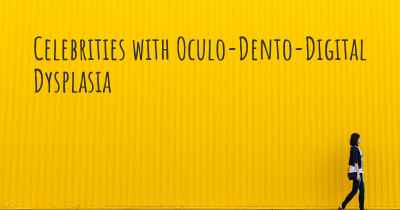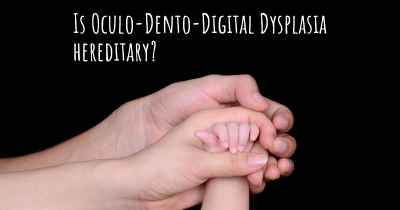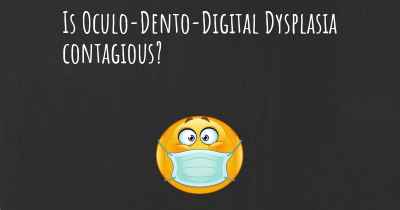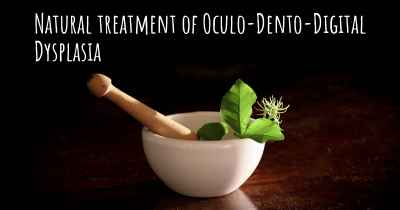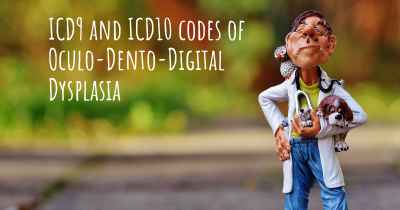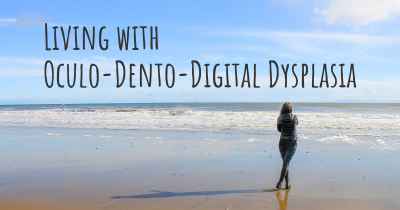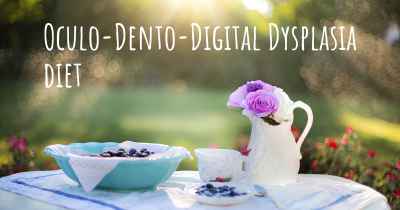What is the history of Oculo-Dento-Digital Dysplasia?
When was Oculo-Dento-Digital Dysplasia discovered? What is the story of this discovery? Was it coincidence or not?
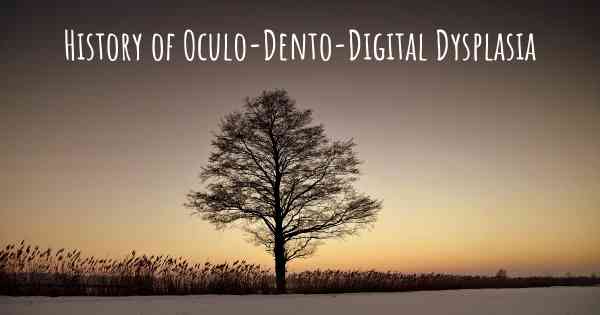
Oculo-Dento-Digital Dysplasia (ODDD) is a rare genetic disorder that affects multiple systems in the body, including the eyes, teeth, and fingers. It was first described in medical literature in the early 1970s by Dr. Harold Gorlin and his colleagues. ODDD is also known by other names, such as Oculodentodigital Syndrome (ODDS) and Meyer-Schwickerath Syndrome.
The discovery of ODDD:
The history of ODDD begins with the pioneering work of Dr. Harold Gorlin, an American geneticist. In the early 1970s, Dr. Gorlin and his team encountered several patients with similar clinical features, including abnormalities in the eyes, teeth, and fingers. They recognized that these patients had a distinct syndrome and published their findings in medical journals, thus establishing ODDD as a recognized medical condition.
Clinical features:
ODDD is characterized by a wide range of clinical features that can vary in severity from person to person. The most common features include:
- Ocular abnormalities: Individuals with ODDD often have small eyes, droopy eyelids (ptosis), and narrow eye openings (microphthalmia). They may also experience vision problems, such as nearsightedness (myopia) or farsightedness (hyperopia).
- Dental abnormalities: Dental anomalies are a hallmark of ODDD. These can include small teeth, enamel defects, and irregularly shaped teeth. Some individuals may have missing teeth (hypodontia) or extra teeth (supernumerary teeth).
- Digital abnormalities: ODDD affects the fingers and toes, leading to various abnormalities. These can include syndactyly (fusion of fingers or toes), clinodactyly (abnormal curvature of fingers or toes), or shortened digits.
Genetics of ODDD:
ODDD is caused by mutations in the GJA1 gene, which provides instructions for making a protein called connexin 43. This protein is involved in the formation of gap junctions, which are channels that allow cells to communicate with each other. Mutations in the GJA1 gene disrupt the normal functioning of connexin 43, leading to the characteristic features of ODDD.
Inheritance pattern:
ODDD is inherited in an autosomal dominant manner, which means that a person only needs to inherit one copy of the mutated gene from either parent to develop the disorder. In some cases, ODDD can also occur sporadically, without a family history of the condition.
Diagnosis and management:
Diagnosing ODDD can be challenging due to its variable presentation and overlap with other conditions. A thorough clinical evaluation, including a detailed medical history, physical examination, and genetic testing, is typically required for an accurate diagnosis.
There is currently no cure for ODDD, and treatment focuses on managing the specific symptoms and complications associated with the disorder. This may involve interventions such as corrective eyewear, dental procedures, and hand surgery to improve hand function.
Research and future prospects:
As ODDD is a rare disorder, research on its underlying mechanisms and potential treatments is limited. However, ongoing studies are aimed at understanding the role of connexin 43 in normal development and how its dysfunction leads to the clinical features of ODDD. This knowledge may pave the way for targeted therapies in the future.
In conclusion, Oculo-Dento-Digital Dysplasia is a rare genetic disorder that affects the eyes, teeth, and fingers. It was first described in the 1970s by Dr. Harold Gorlin and his colleagues. ODDD is characterized by a range of clinical features, including ocular, dental, and digital abnormalities. It is caused by mutations in the GJA1 gene and is inherited in an autosomal dominant manner. While there is no cure for ODDD, management focuses on addressing specific symptoms and complications. Ongoing research aims to deepen our understanding of the disorder and potentially develop targeted therapies in the future.

